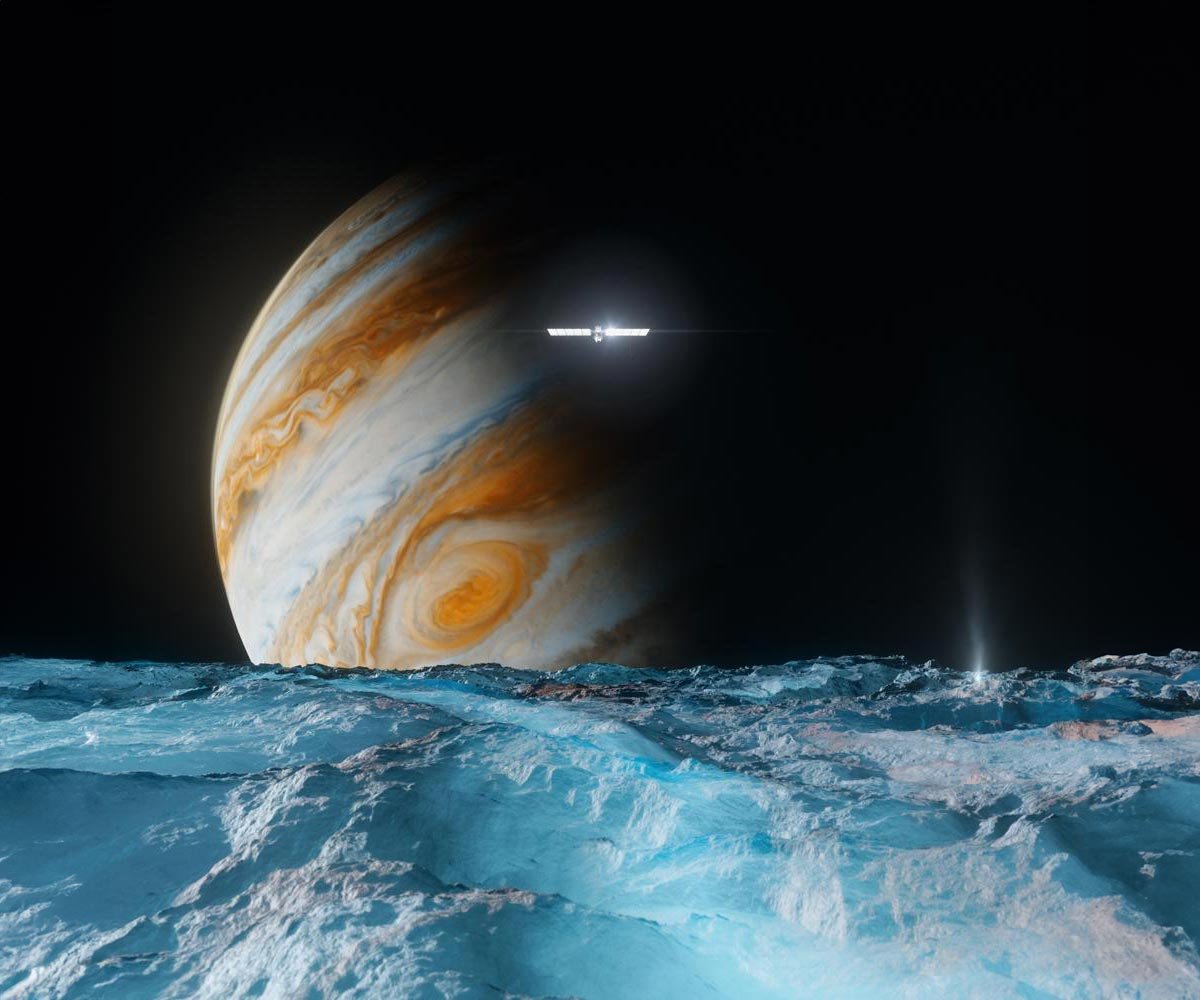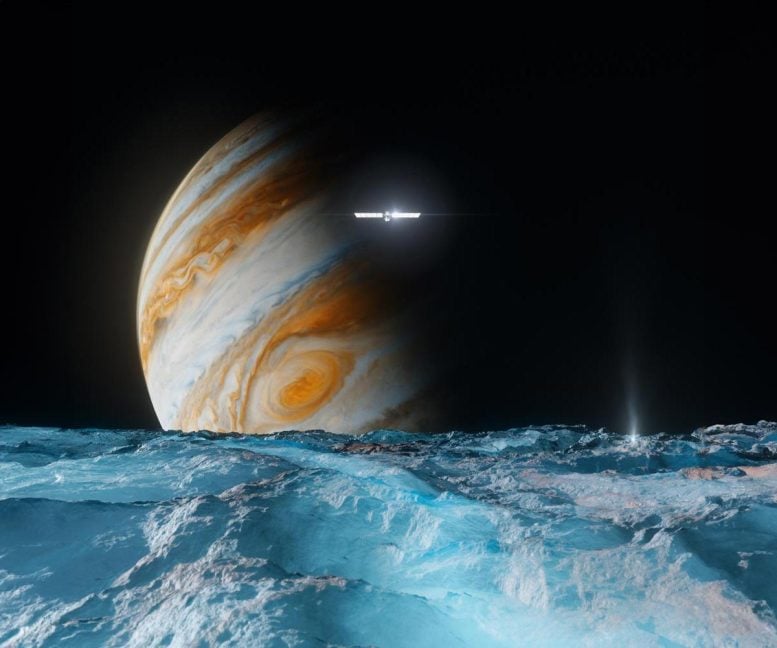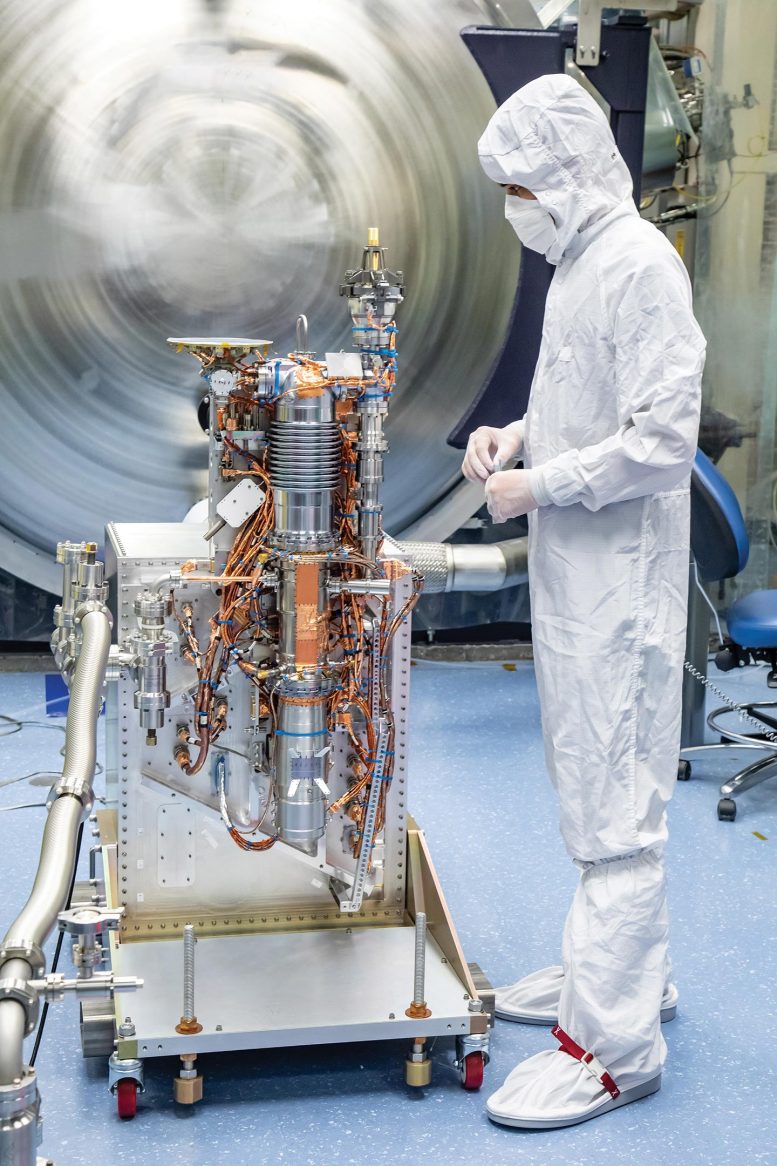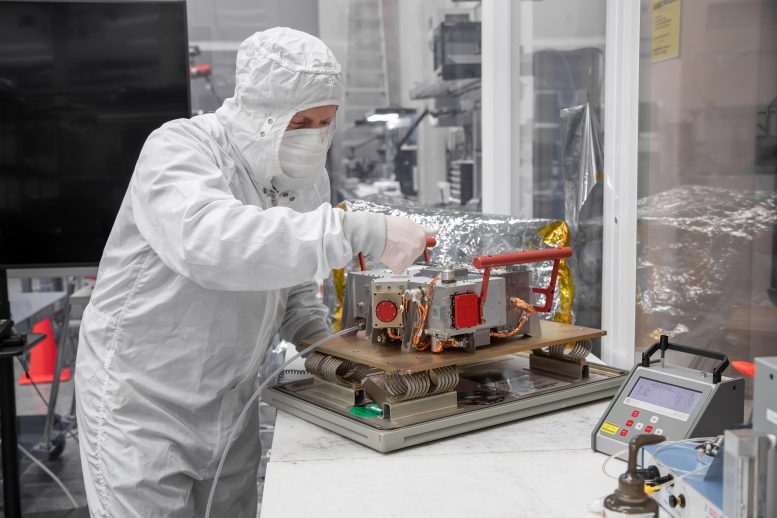

NASA’s Europa Clipper mission, featuring SwRI’s MASPEX and UVS instruments, seeks to uncover clues about life-supporting conditions on Jupiter’s moon Europa.
MASPEX will analyze molecules with high precision, while UVS will search for atmospheric plumes, potentially revealing Europa’s ocean characteristics. This long-awaited mission brings together international scientists to explore Europa’s habitability.
Exploring Europa: Potential for Life
Two Southwest Research Institute (SwRI) instruments were launched aboard NASA’s Europa Clipper spacecraft from the Kennedy Space Center on October 14. This mission aims to closely study Jupiter’s moon Europa, exploring whether it has conditions that might support life.
The SwRI-developed instruments, the MAss Spectrometer for Planetary EXploration (MASPEX) and the Ultraviolet Spectrograph (Europa-UVS), are part of nine scientific instruments and a gravity investigation developed to examine Europa. Europa, Jupiter’s fourth-largest moon, is one of the prime candidates for potential life in our solar system. In the 1990s, NASA’s Galileo mission provided compelling evidence that Europa, roughly the size of Earth’s moon, contains a liquid ocean beneath an icy shell of unknown thickness. This ocean may hold twice as much water as all of Earth’s oceans combined.

MASPEX: High-Resolution Spectrometry for Europa’s Ocean
“The ability to characterize this ocean remotely is key — MASPEX has a mass resolution 50 times finer than anything that has flown to space before,” said SwRI Senior Vice President Dr. Jim Burch, who serves as MASPEX’s principal investigator. Burch leads the Institute’s Space Sector, with three divisions devoted to space science, solar system science, and space systems. “MASPEX can differentiate between molecules with almost identical masses based on the energy binding the atoms. It also differentiates isotopes — atoms with equal numbers of protons but a different number of neutrons. These capabilities are crucial to revealing the habitability of Europa.”
SwRI internal research, NASA instrument development programs, and the Europa Clipper project funded MASPEX’s development.

UVS Instrument: Analyzing Plumes and Atmosphere on Europa
Europa-UVS is the sixth in a series of SwRI-built ultraviolet spectrographs, benefitting greatly from the design experience gained by its team from the Juno-UVS instrument, which is currently operating in Jupiter’s harsh radiation environment on NASA’s Juno spacecraft.
“UVS is designed to hunt down and study potential plumes emanating from surface cracks on Europa,” said Dr. Kurt Retherford, principal investigator for the UVS instrument and a senior program manager at SwRI. UVS will look at the composition and chemistry of Europa’s atmosphere to understand its source, structure, and variability. It will search for and characterize plumes in terms of activity and the nature of subsurface water reservoirs.
“Once UVS detects any potential plumes, the spacecraft might fly through them, allowing MASPEX to ‘sniff’ the volatile gases,” said Burch.

Analyzing Volatile Gases for Clues to Europa’s Ocean
The mass spectrometer is designed to measure the molecular and isotopic composition of these gases, offering insight into the oxidation state of the moon’s subsurface ocean and potential metabolic energy sources for potential microbial life.
“With these precise measurements, the composition of the gases will reveal the story of the interior and whether the conditions for life exist beneath the icy surface of Europa,” Burch explained.
Another UVS is en route to Jupiter now aboard ESA’s Jupiter Icy Moons Explorer (Juice) to orbit both Jupiter and its moon Ganymede.
“Having two UVS instruments in the Jupiter system making measurements will offer exciting complementary science possibilities,” said Retherford. “Juice is primarily studying Ganymede, but it will fly past Europa twice.”
Europa Clipper is NASA’s largest solar-powered spacecraft for a planetary mission, and it will enter a long, looping orbit around the gas giant Jupiter to perform repeated close flybys of the moon over a four-year period. In total, the mission will perform nearly 50 flybys at altitudes ranging from 16 miles to 1,700 miles (25 kilometers to 2,700 kilometers).
The Europa Clipper mission, developed by NASA’s Jet Propulsion Laboratory (JPL) in collaboration with the Johns Hopkins Applied Physics Laboratory (APL), aims to explore Jupiter’s moon Europa to assess its potential for supporting life. Managed by Caltech in Pasadena, California, and directed by NASA’s Science Mission Directorate, the mission involves close flybys of Europa to analyze its icy surface and hidden ocean. The Science Mission Directorate, which oversees the mission’s planning and operations, leads a broad range of research in Earth science, space weather, and planetary exploration, aiming to deepen our understanding of the solar system and beyond.
The MAss Spectrometer for Planetary EXploration (MASPEX) and the Ultraviolet Spectrograph (Europa-UVS) are two advanced instruments developed by the Southwest Research Institute (SwRI) to investigate the potential habitability of Jupiter’s moon Europa. MASPEX, designed to analyze the molecular and isotopic composition of Europa’s atmosphere and possible plumes, is a collaborative effort involving scientists from SwRI, SETI, Washington University, Arizona State University, Imperial College London, and the University of Franche-Comté. Europa-UVS, crafted to detect and study ultraviolet emissions and potential water vapor plumes on Europa, brings together expertise from SwRI, The University of Texas at San Antonio, SETI, the Planetary Science Institute, Royal Institute of Technology in Sweden, and the University of Cologne in Germany. These instruments play crucial roles in NASA’s Europa Clipper mission, advancing our understanding of Europa’s environment and its potential to support life.